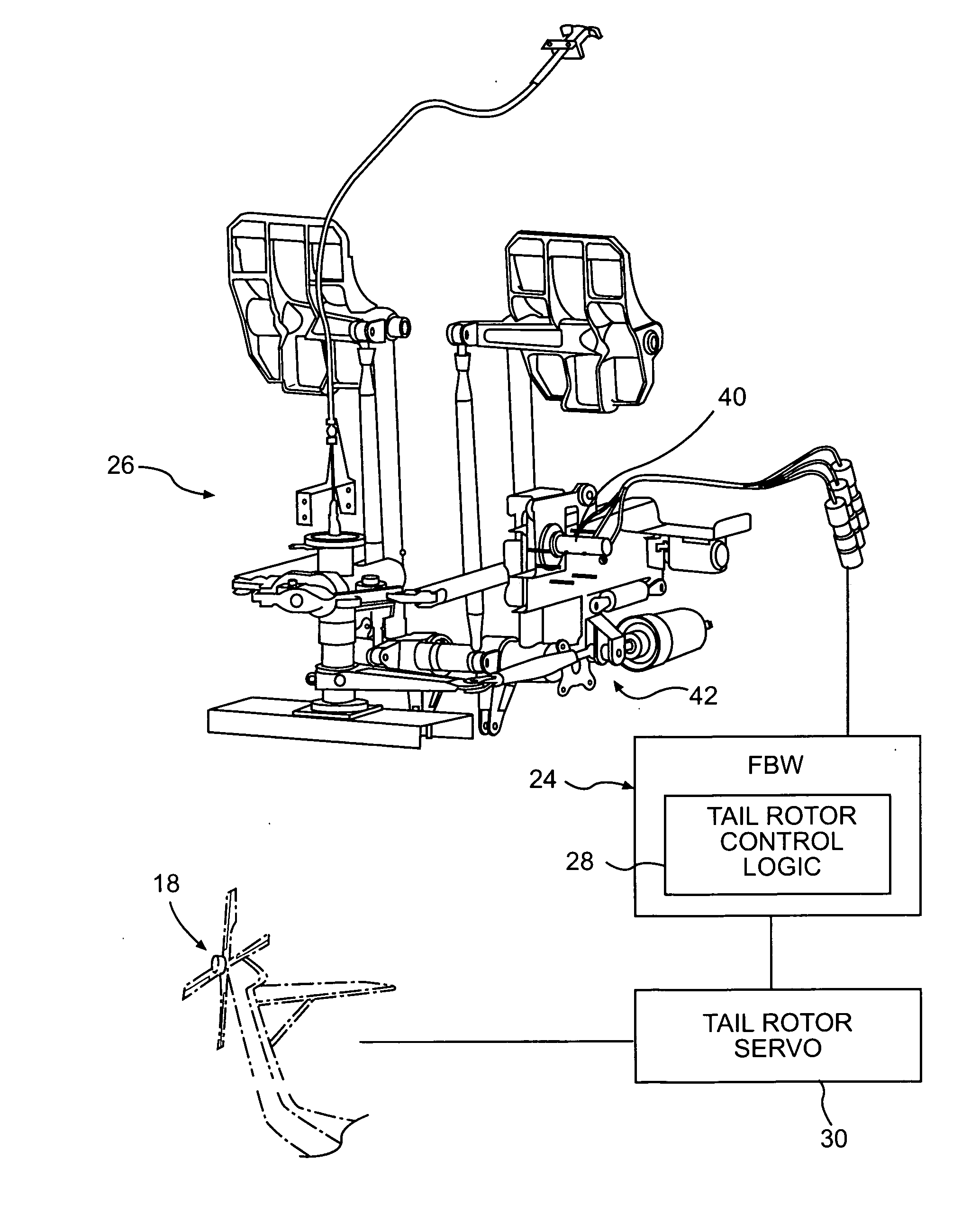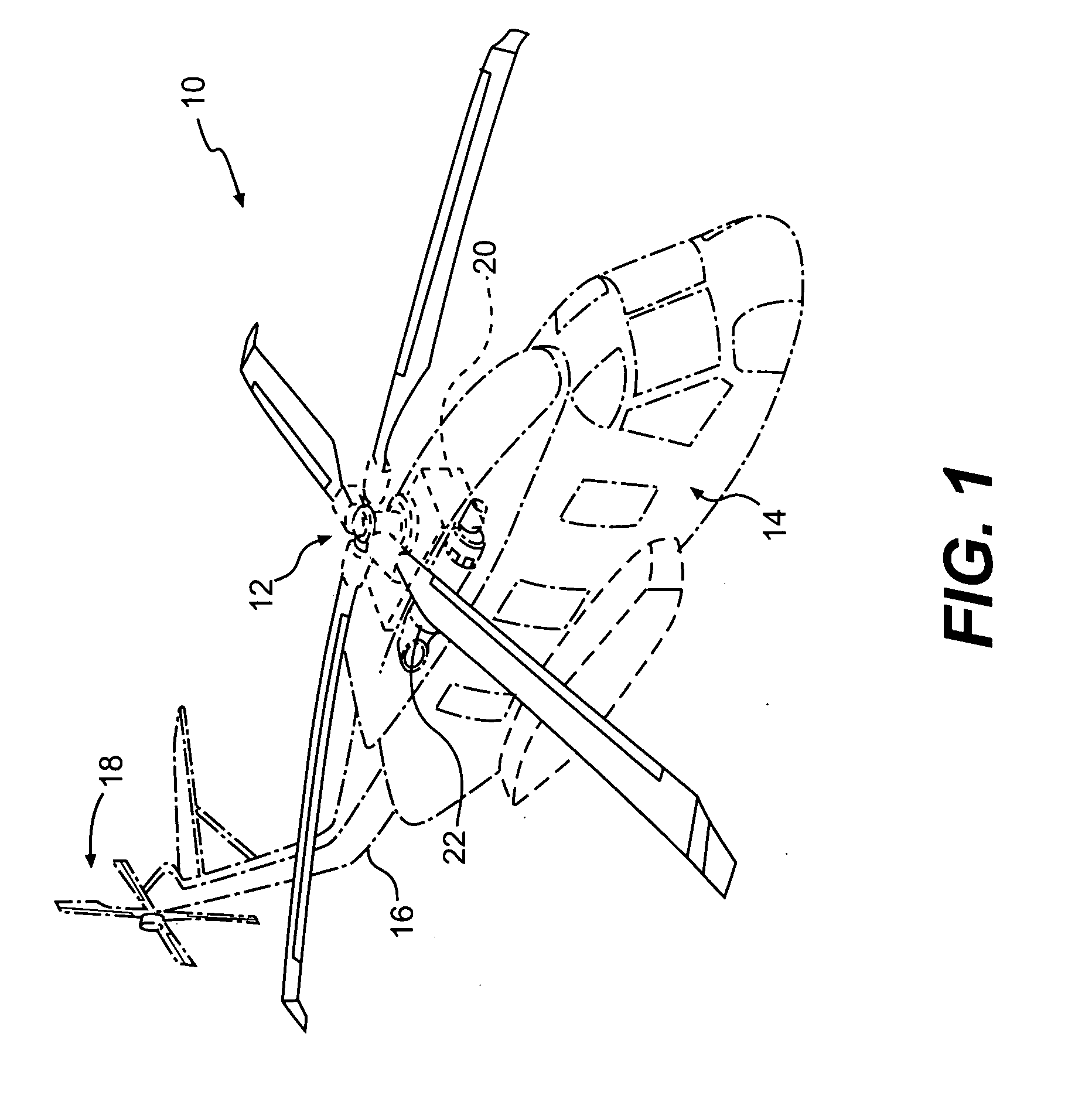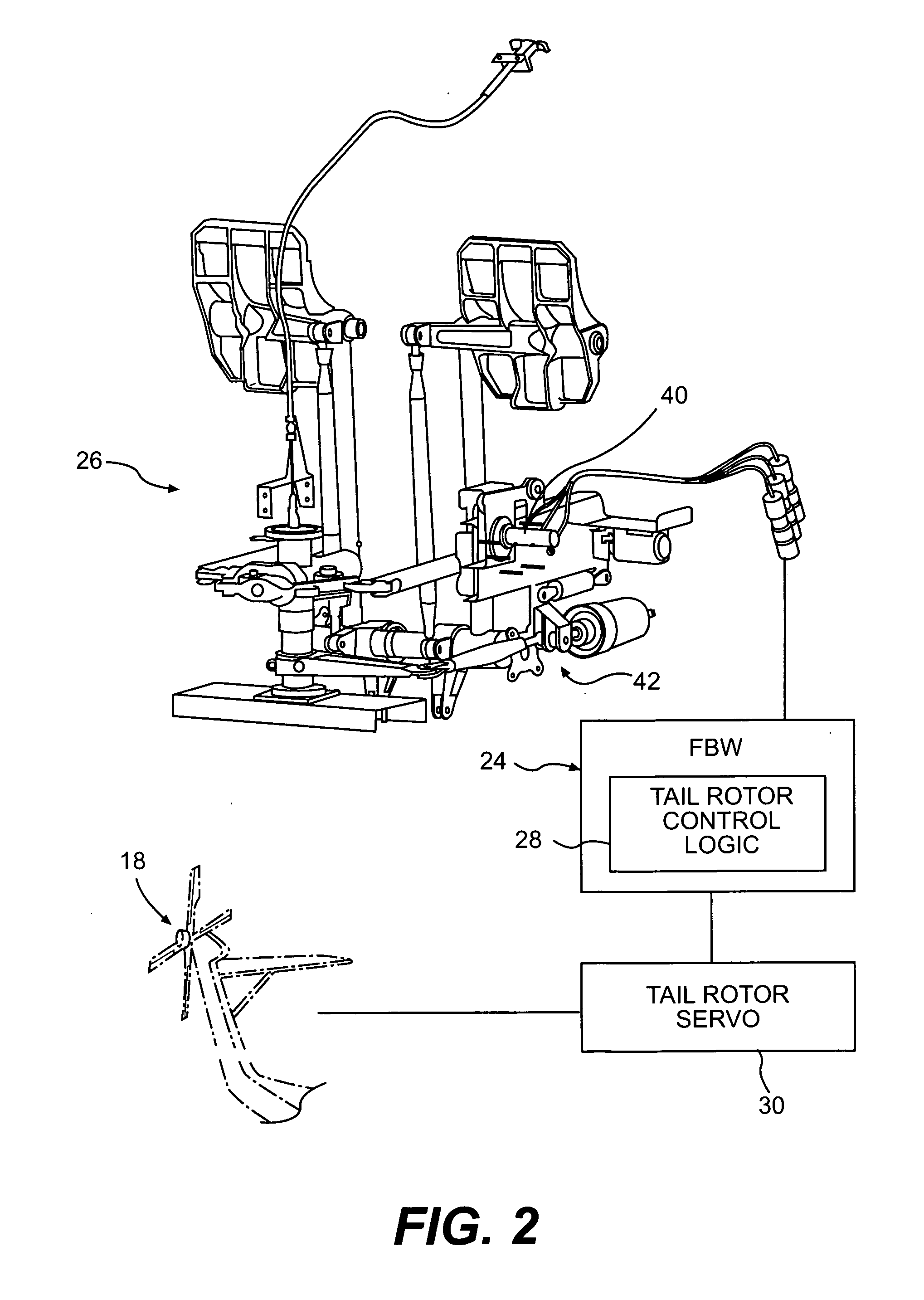Full authority fly-by-wire pedal system
a pedal system and full-authority technology, applied in the direction of actuating personally, mechanical equipment, transportation and packaging, etc., can solve the problems of frequent pedal movement, increased pilot workload, uncomfortable or otherwise distracting autopilot movement of the pedals, etc., to improve the yaw axis (azimuth) control of the aircraft, reduce pilot workload, and improve pilot workload. , the effect of reducing the workload of the pilo
- Summary
- Abstract
- Description
- Claims
- Application Information
AI Technical Summary
Benefits of technology
Problems solved by technology
Method used
Image
Examples
Embodiment Construction
[0019]FIG. 1 schematically illustrates a rotary-wing aircraft 10 having a main rotor assembly 12. The aircraft 10 includes an airframe 14 having an extending tail 16 which mounts an anti-torque tail rotor system 18. The main rotor assembly 12 and the anti-torque tail rotor system 18 are driven through a transmission (illustrated schematically at 20) by one or more engines (illustrated schematically at 22). Although a particular helicopter configuration is illustrated in the disclosed embodiment, other anti-torque systems such as ducted fans and propulsors will also benefit from the present invention.
[0020] Referring to FIG. 2, the anti-torque tail rotor system 18 is driven through an aircraft flight control system 24. The aircraft flight control system 24 is preferably a full authority Fly-By-Wire (FBW) flight control system 24 that utilizes signals to convey pilot intentions to the flight control servos. In the FBW flight control system 24, a pilot provides input through FBW yaw f...
PUM
 Login to View More
Login to View More Abstract
Description
Claims
Application Information
 Login to View More
Login to View More - R&D
- Intellectual Property
- Life Sciences
- Materials
- Tech Scout
- Unparalleled Data Quality
- Higher Quality Content
- 60% Fewer Hallucinations
Browse by: Latest US Patents, China's latest patents, Technical Efficacy Thesaurus, Application Domain, Technology Topic, Popular Technical Reports.
© 2025 PatSnap. All rights reserved.Legal|Privacy policy|Modern Slavery Act Transparency Statement|Sitemap|About US| Contact US: help@patsnap.com



